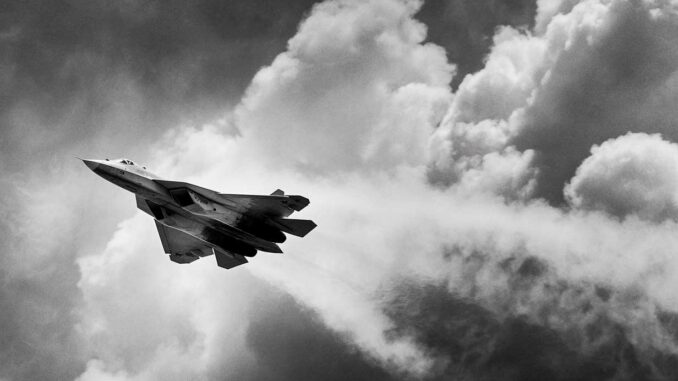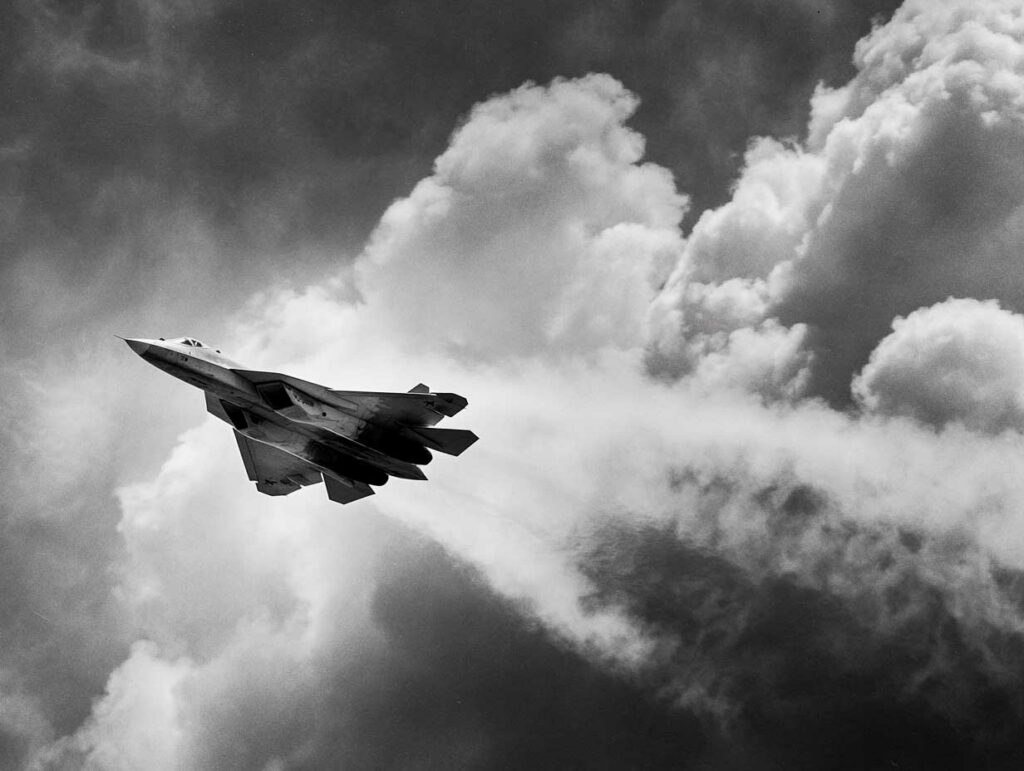
Technical analysis of the effectiveness of the R-37M air-to-air missile against a stealth aircraft: range, sensors, limitations, and operational reality.
The R-37M air-to-air missile, designed by Russia, is one of the longest operational air-to-air missiles currently in service. With a maximum range of over 300 kilometers, this active radar-guided missile is often presented as a direct threat to Western fighter jets, including stealth models such as the F-22 Raptor and F-35 Lightning II. However, a key question remains: is this impressive range truly exploitable against a target with advanced radar stealth capabilities?
The debate goes beyond mere technical considerations. It raises the question of the viability of long-range weaponry in a context where air warfare is now marked by electronic warfare, sensor fusion, and multi-band stealth. In reality, the theoretical maximum range of a missile does not always reflect its operational range. The ability of the R-37M missile to intercept a highly stealthy target depends on many factors, which this article will examine in detail.
The objective here is to provide a rigorous, quantified, and realistic analysis, without relying solely on Russian industrial statements or theoretical assumptions. We will detail the missile’s technical capabilities, the limitations associated with detecting stealth targets, its actual performance according to mission profiles, and finally the place of the R-37M in modern air combat.
The R-37M air-to-air missile: theoretical performance and intended use
The R-37M, developed by the Russian company Vympel, is a modernized evolution of the R-33, a missile designed in the 1980s for the MiG-31. The R-37M is designed to engage targets at very long ranges, including airborne early warning aircraft such as the E-3 Sentry and E-2D Hawkeye, as well as refueling aircraft and high-altitude ISR platforms.
It weighs approximately 510 kg, is 4.06 meters long, and has a 60 kg warhead. Its maximum speed reaches Mach 6, or approximately 7,400 km/h at high altitude. It is powered by a dual-pulse solid fuel engine, which allows it to have a fast initial flight phase followed by a second ignition for the final approach.
The missile’s maximum range is often stated as between 280 km and 398 km, depending on the altitude and speed of the carrier. However, these values assume that the target does not perform any evasive maneuvers and that radar illumination is continuous until terminal guidance.
Guidance relies on a combination of inertial navigation and mid-course data link, followed by an active radar seeker in the terminal phase. It is this sensor that will pose a problem when it comes to hitting a stealth target.
Platforms that can carry it include the MiG-31BM, Su-35S, and Su-57. However, performance depends heavily on the carrier radar. The MiG-31BM’s Zaslon-M has a declared detection range of over 400 km against conventional targets, but against a stealth aircraft, this range drops considerably.

The challenge of detecting a stealth aircraft before firing
For a long-range missile such as the R-37M to be used effectively, the target must be detected, identified, and then tracked long enough to allow for an accurate shot. However, this is where the missile’s promise collides with the reality of modern radar stealth.
A stealth aircraft such as the F-22 or F-35 has a radar cross section (RCS) of less than 0.001 m² on certain radar bands. This makes it extremely difficult to detect with standard airborne radar.
Even the MiG-31’s Zaslon-M radar, although impressive, would only be able to detect such a target at a distance of 40 to 60 km, and even then only under ideal conditions. This range is well below that of the missile, which means that in a confrontation with a stealth target, the missile could never be used at its maximum theoretical range.
In comparison, a radar such as the AN/APG-81 on the F-35 can detect a Su-35 or MiG-31 at over 150 km, giving the stealth pilot considerable strategic leeway to evade or engage without being detected.
Russia is attempting to compensate for this by using remote sensors such as the N036L-1-01 L-band radar on the Su-57, or platforms such as the A-50U. However, the reliability of these sensors in accurately detecting a stealth target remains limited, and above all, engagement via third-party data links involves a delay and inaccuracy that are difficult to reconcile with very long-range missile firing.
Actual operational range against a stealth target
Under ideal conditions, against a non-maneuvering and clearly visible target, the effective range of the R-37M missile is estimated at around 200 to 250 km. But against a stealth aircraft, this range drops considerably.
In practice, the R-37M’s ability to intercept an F-35 is limited by three factors:
- Insufficient detection: if the enemy aircraft is only detected at 50 km, the missile cannot be fired before this threshold.
- Reaction time: a modern fighter jet can change course or altitude in a matter of seconds. At Mach 6, the R-37M will take around 30 seconds to cover 250 km, but the terminal phase remains dependent on continuous tracking.
- Self-guidance ineffective at short range if the SER is too low: tests show that active air-to-air missile radars struggle to lock onto a stealth target beyond 15 to 20 km.
Thus, it can be estimated that in real combat conditions, the probability of success of an R-37M against a stealth aircraft is very low beyond 50 to 70 km, unless the target is detected and designated by a third-party radar, which remains hypothetical and vulnerable to electronic warfare.
Strategic utility and limitations in modern warfare
Faced with modern Western platforms, Russian doctrine relies more on long-range intimidation than on effective long-range engagements. The R-37M air-to-air missile remains formidable against low-maneuverability targets such as refueling aircraft and AWACS, but it is not designed to ensure superiority against stealth fighters.
That said, the missile retains significant strategic utility:
- It forces enemy forces to operate with caution deep within the theater of operations.
- It threatens command and refueling platforms that are essential to any air operation.
- It complements Russia’s anti-access/area denial (A2/AD) capabilities by extending the interception range well beyond the front line.
However, the vulnerability of carriers such as the MiG-31 and Su-35 to Western radar detection, their low stealth capability, and the kinetic nature of the missile make it less effective against stealthy, maneuverable fighter aircraft integrated into a network-centric architecture.
In a symmetrical conflict, Russia could use the R-37M to saturate the airspace at a distance, but their real effectiveness would depend on a coherent network of sensors that is not sensitive to electronic warfare and stealth—something that current Russian doctrine does not seem to have fully resolved.
War Wings Daily is an independant magazine.